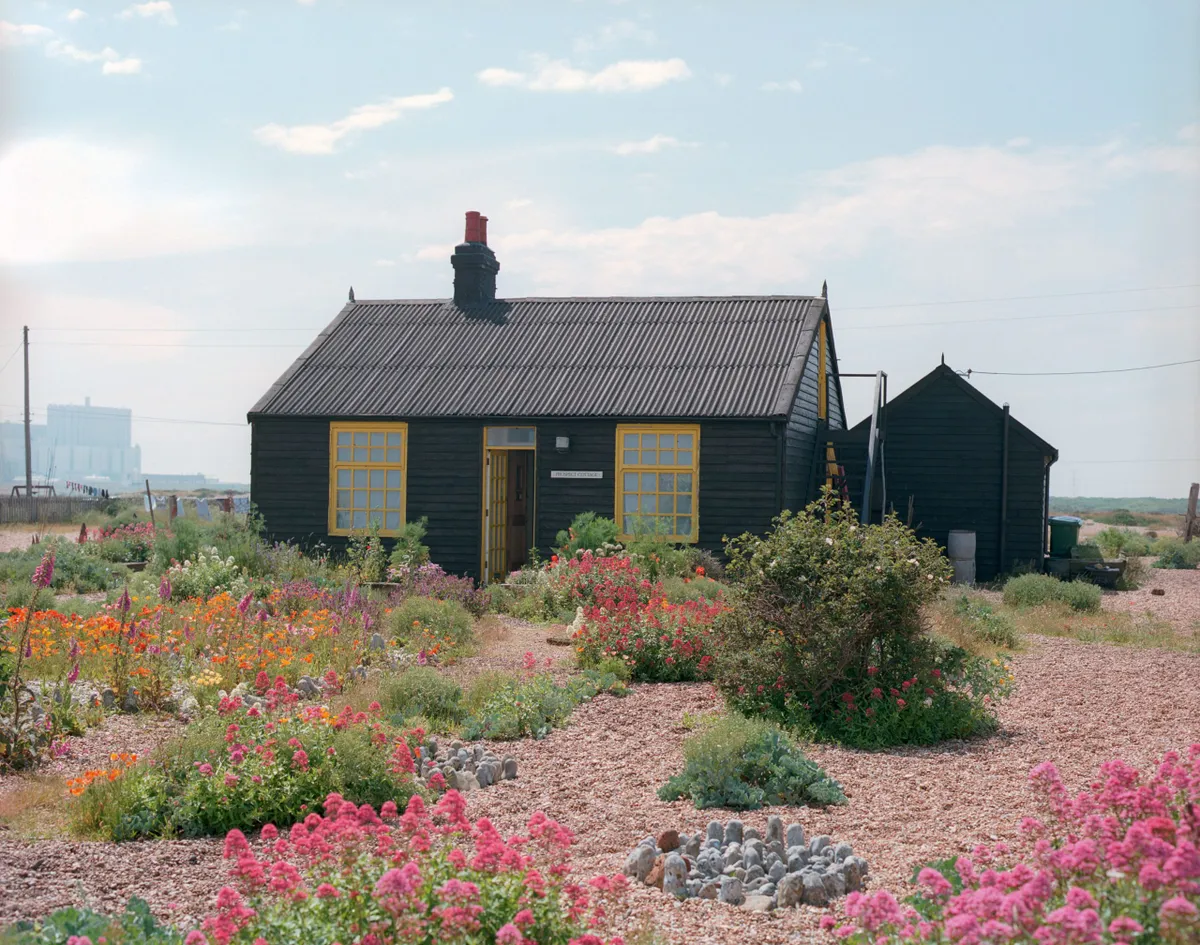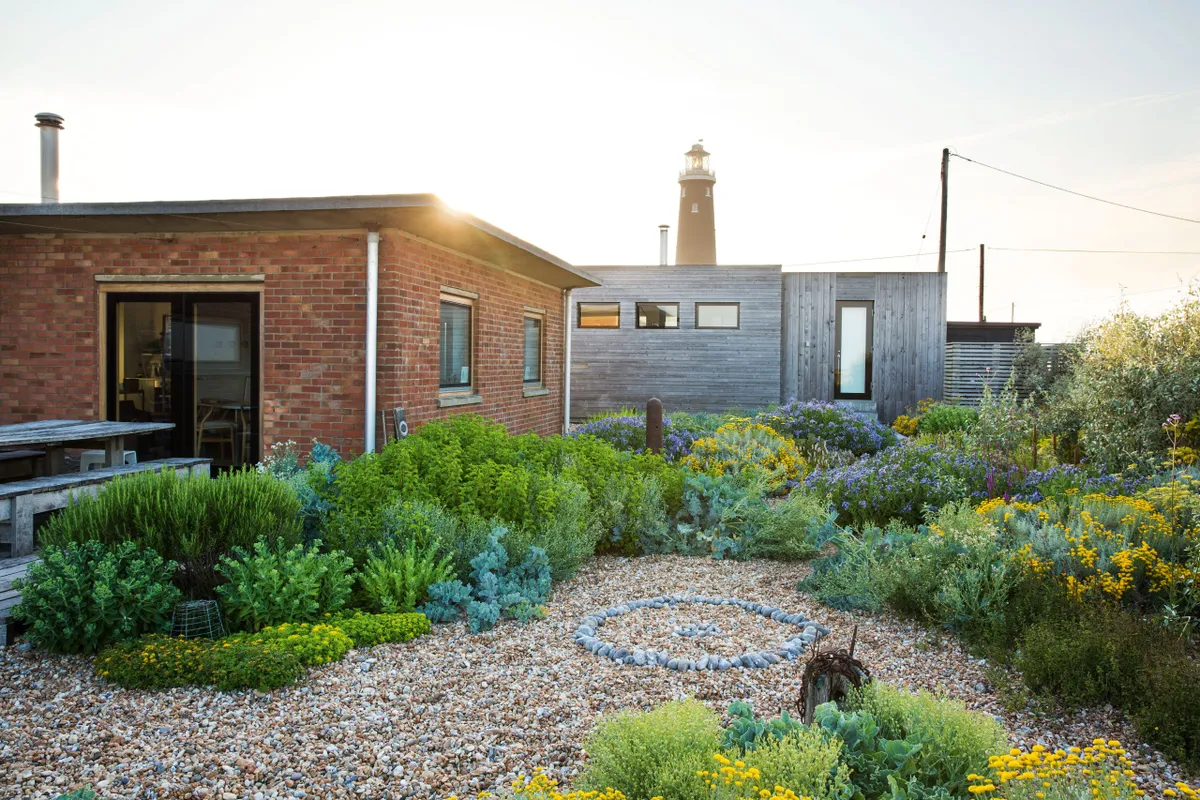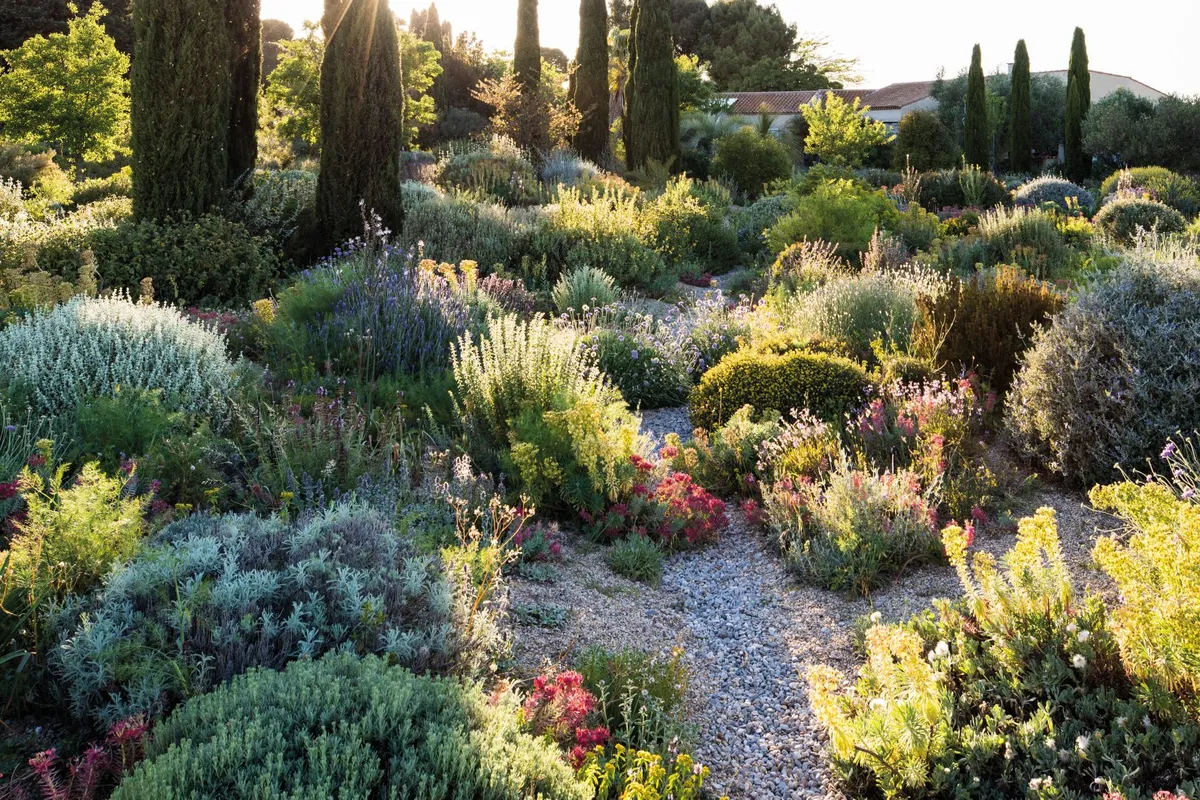I find that certain styles of planting have been somewhat hogging the limelight. Prairie planting anyone? Meadows perhaps? Now this is all well and good, and of course they have their place but they lack versatility – and, in the depths of winter, there’s basically nothing there.
Gravel gardening may not immediately grab the headlines but should in fact be far more popular and better recognised. A gravel garden works on all scales, large and small and its relatively easy to look after – perhaps about half the time of a conventional mixed border. I’ve used gravel gardens equally successfully in minuscule London gardens as well as country estates where vast walled gardens need a large, planted space without the expense of an army of gardeners.
I first came to gravel garden planting through Joyce Robinson’s Denmans – the garden made famous by the late designer John Brookes, which had dry river beds and gravel paths creating space and light within the garden and among the plants themselves. Then Derek Jarman’s gravel Prospect Cottage garden on the beach at Dungeness came into our consciousness before Beth Chatto tore up her car park to make a gravel garden that had people finally taking notice.

The element that links these gravel gardens and plantings together is that they have a gentle sense of ‘somewhere else’. An invented habitat of never normally seen together exotics that can’t co-exist happily within the environment of a conventional mixed border, yet the gravel garden planting mix can be skewed to suit whatever you want: Mexican agaves and Dasylirion can be deployed in a more contemporary setting or for Mediterranean purists, lavender, rosemary and olives. But there really aren’t many rules for gravel gardens especially on larger scales. A scattering of evergreens can make a loose structure so that you have a genuinely year-round garden and then almost anything goes. Rigid colour schemes are not necessarily required for gravel gardens and a contrasting flower colour and leaf shape from one plant to the next can be the recipe for a successful gravel garden. A range of heights is good too. Individual shrubs or small trees emerging from their ground-hugging neighbours and spires of Verbascum erupting from the gravel make for eye-catching punctuation.
Creating a gravel garden
- Wherever possible a local gravel should always be used to visually tie the garden into its setting and to any vernacular materials nearby. It will also have a lower carbon footprint.
- The gravel mulch for your gravel garden should be around 5-7cm deep and spread over all beds so there is no longer any bare soil, and under no circumstances put down any sort of membrane beneath the gravel.
- There is nothing worse than seeing the edges of some awful material poking up through the gravel in your garden. You want the worms to pull the gravel stones down into the soil to improve drainage further and prevent excessive run-off into drains during heavy downpours.
- The same loose gravel can make an ideal path surface as long as the stone sizes aren’t too big, preferably 10mm diameter and definitely no bigger than 20mm or it will be like walking on a shingle beach.
- If you want a more solid surface you could upgrade to a self-binding gravel on the paths that sets hard and has just a few loose stones on the surface but you need to choose a gravel of exactly the same tone. Increasingly winter wet kills more plants than the cold does so drainage is key and a gravel garden solves the problem. Get it right and you can embrace climate change and grow all sort of exotics hailing from Mediterranean climates around the world, including Australia, America and North Africa.
Key tips and examples for creating a gravel garden
1
Foliage first
Adding silver-leaved plants to the gravel garden mix automatically makes us think of hotter climes and exotic places. In my 2010 Chelsea garden, I initially selected each plant for the leaf shape, colour and texture and although the flowers were important they were less crucial.
2
Site specific

Emily Erlam’s creation at Dungeness takes a more gardenesque approach than the neighbouring Prospect Cottage and has exotic Mediterranean species colonising the sun-baked shingle of the beach. The planting helps anchor the modern building to its setting.
3
Changing face
Gravel gardens provide plenty of opportunity for flower colour, and the colour scheme can change a number of times throughout the seasons. It can be simple and controlled at times or erupt into a multitude of colours.
4
Simply Modern
With a contemporary Japanese feel, this gravel garden by Matt Keightley is a masterclass in form and space. Simplicity is key with a paired-back palette of predominantly Pinus sylvestris ‘Watereri’, whose mounded shapes give the garden a sculptural quality.
5
Dry Mix

Olivier Filippi who has a nursery in the South of France has emerged as a big name in dry gardens. He favours foliage over flowers and chooses plants adapted to poor, dry soils where they produce the naturally mounded shapes found in the wild.
6
Anything goes
The Beth Chatto tribute garden at last year’s RHS Hampton Court Palace Garden Festival mixed lavender with junipers, alliums, festucas, foxtail lilies and Eryngium agavifolium, proving that this style of planting can be informal and forgiving. Almost anything could go into the mix, regardless of size or colour. Turn the page for more ideas on gravel gardens
Andy Sturgeon is an internationally renowned landscape and garden designer. He is the winner of eight Gold medals at the RHS Chelsea Flower Show, including Best in Show in 2019. andysturgeon.com




